by the mid-1970s had become the world’s largest independent record company, and it continued to grow rapidly. A lot of music was being released, and ambitious marketing efforts were undertaken to promote it. To help ease the burden of in-house designers to produce a growing volume of advertising and merchandising, in addition to album and single packages, the label’s art director (and my former college instructor), Roland Young, enlisted me to become the company’s first advertising art director.
It was for me a dream job, melding my lifelong passion for music with advertising, which I’d studied at Art Center College of Design. (Just the year before I’d moved back to Los Angeles from New York, where I’d worked for an ad agency.)
It was a spectacular opportunity and tremendous fun. Roland was a favorite teacher in school, and I learned a ton under his tutelage at A&M. The assignments came fast and furious. I was encouraged to try stuff, and there was a budget for nearly anything I thought to do. Additionally, I worked in the art department with talented and creative folks, and everyone I met throughout the company was friendly and supportive.
Mostly I did trade and consumer ads, but was given a couple packaging assignments along the way. Several months into my tenure, a plum project was handed to me, art directing a newspaper, which Creative Director Chuck Casell titled Off the Record. He debuted the journal’s mission on its cover:
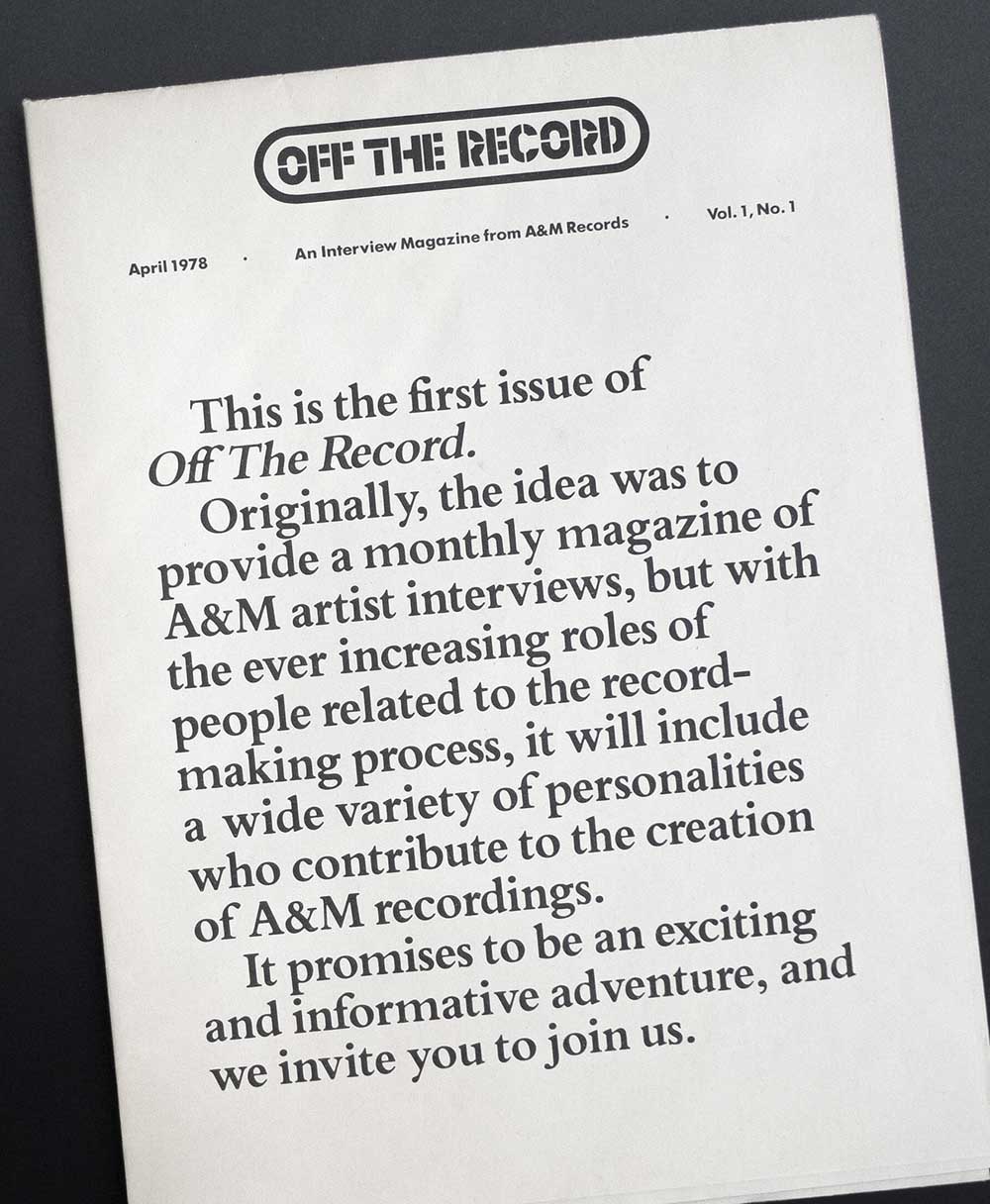
There was some urgency to get the premier issue out, and everyone involved cooperated enthusiastically. The logo design and layouts I proposed were approved, and the first issue went out quickly.
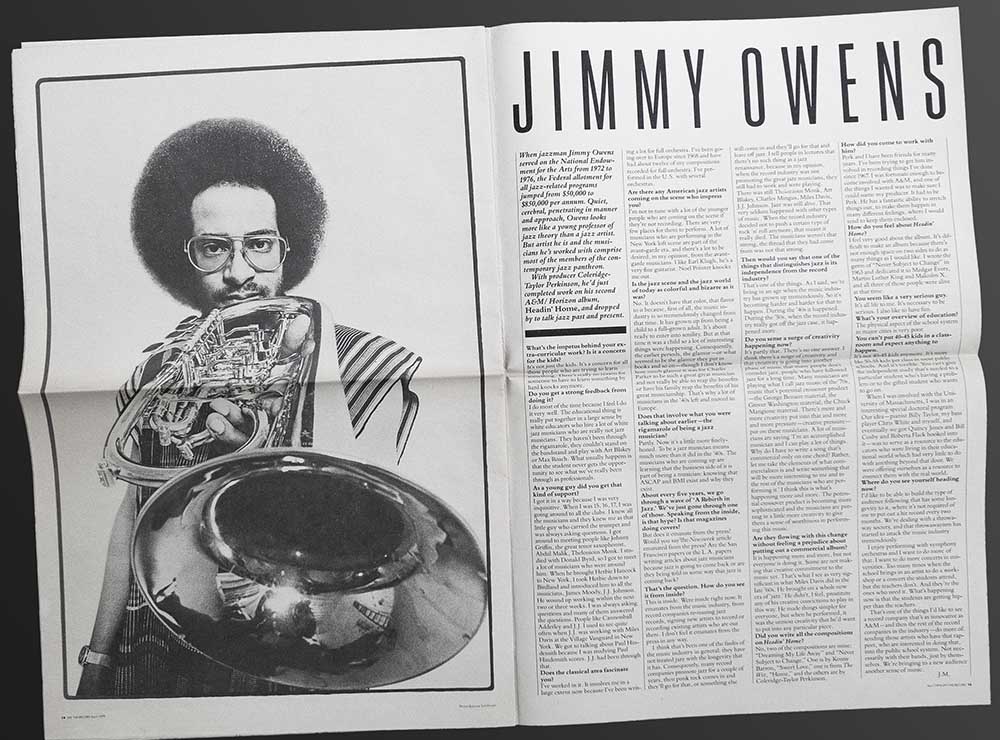
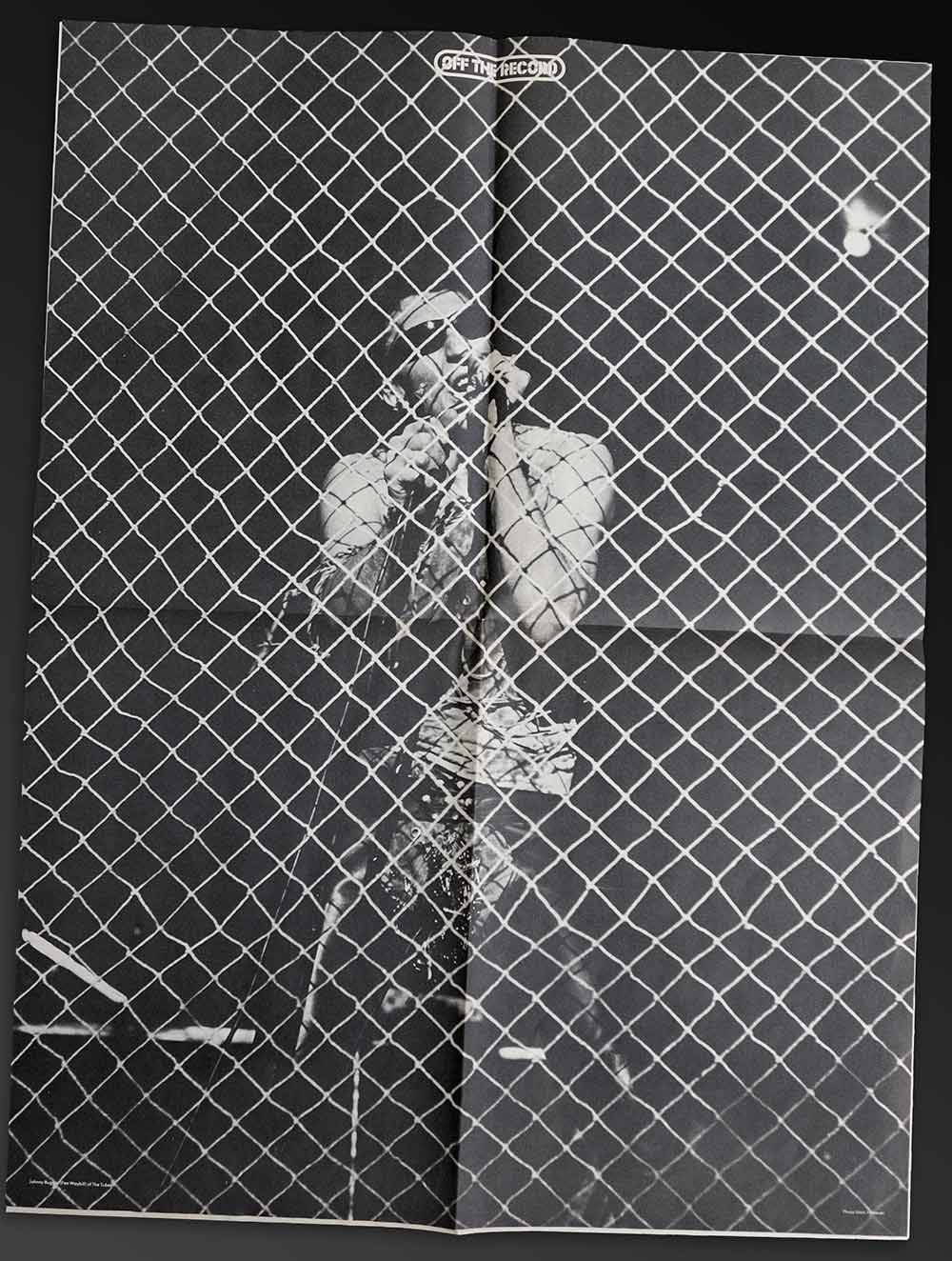
I began work on the second issue immediately, and having a bit more time, I was able to commission and create artwork specifically for the publication.
Christian Piper, whose work graces the covers of the Rolling Stones’ Tattoo You and Made in the Shade albums, provided the issue’s front cover, and Dave McMacken, who’d done covers for Frank Zappa and Weather Report, created an illustration of Paul Winter expressly for the journal. Staff photographers Bonnie Schiffman and Mark Hanauer contributed compelling images of most of the interviewees.
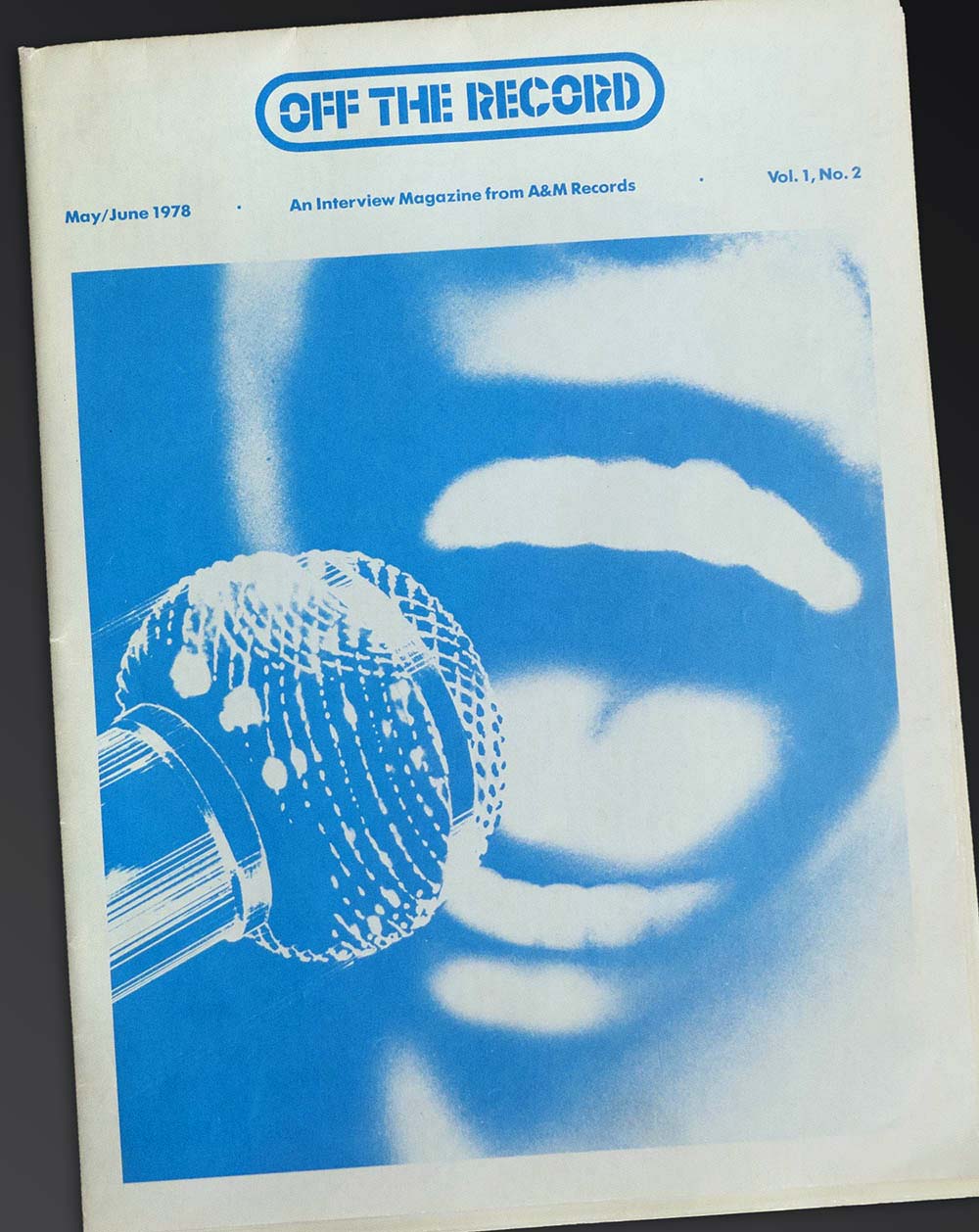
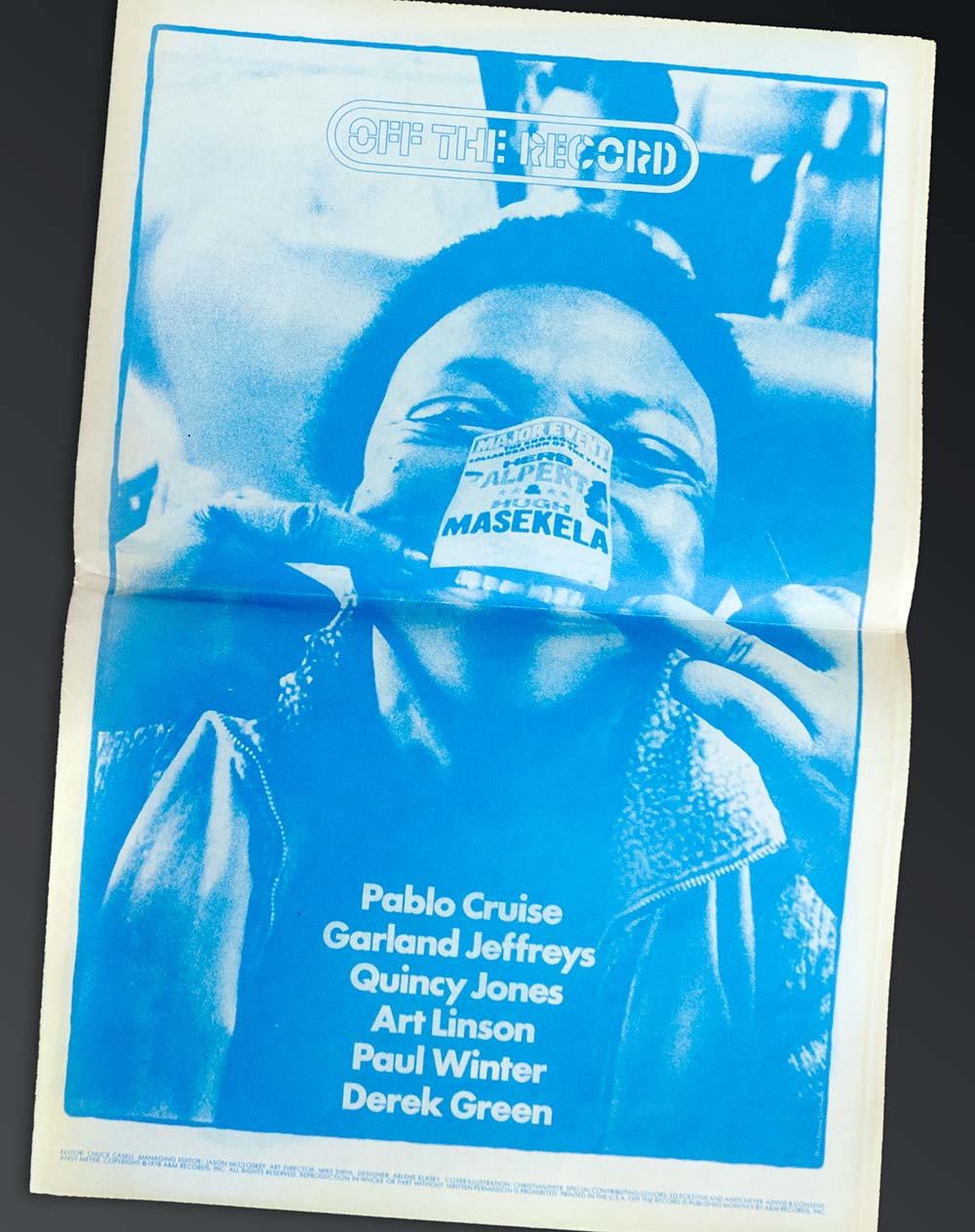
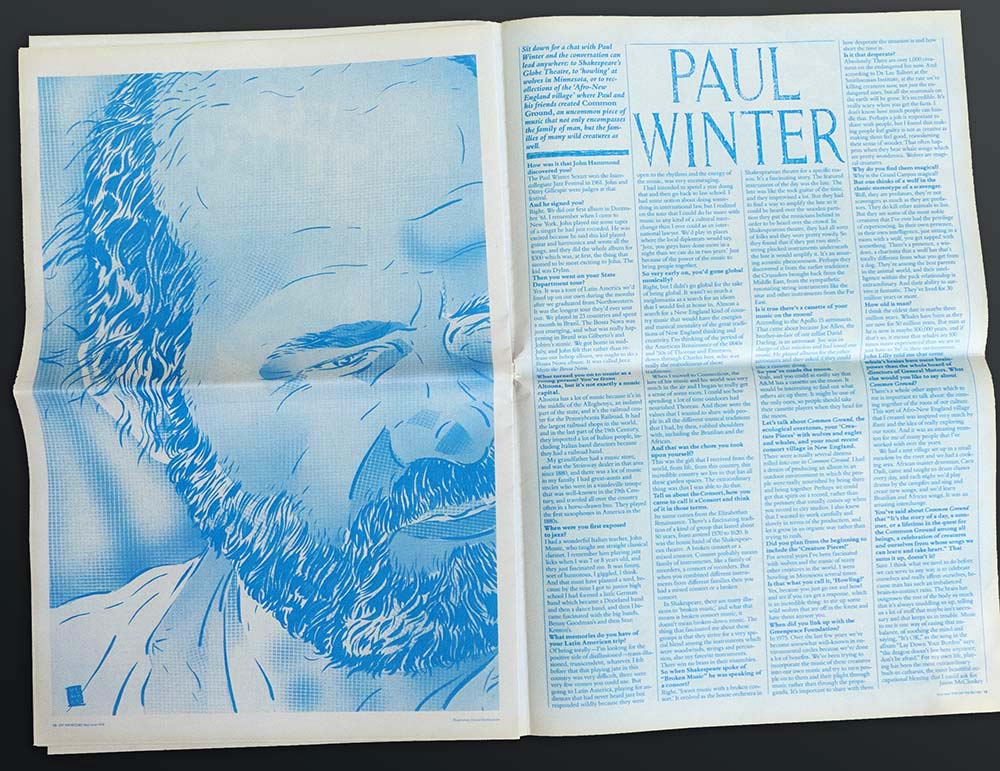
Quincy Jones, one of A&M’s premier artists and producers, had an album in the works. For the center spread I created an image that first entailed having a likeness of Quincy sculpted. Using vacuum forming, I had a black-plastic mold made of the 3D face. Finally, a photographer shot that model, and composited it with his photo of a vinyl record. All this before Photoshop — imagine!
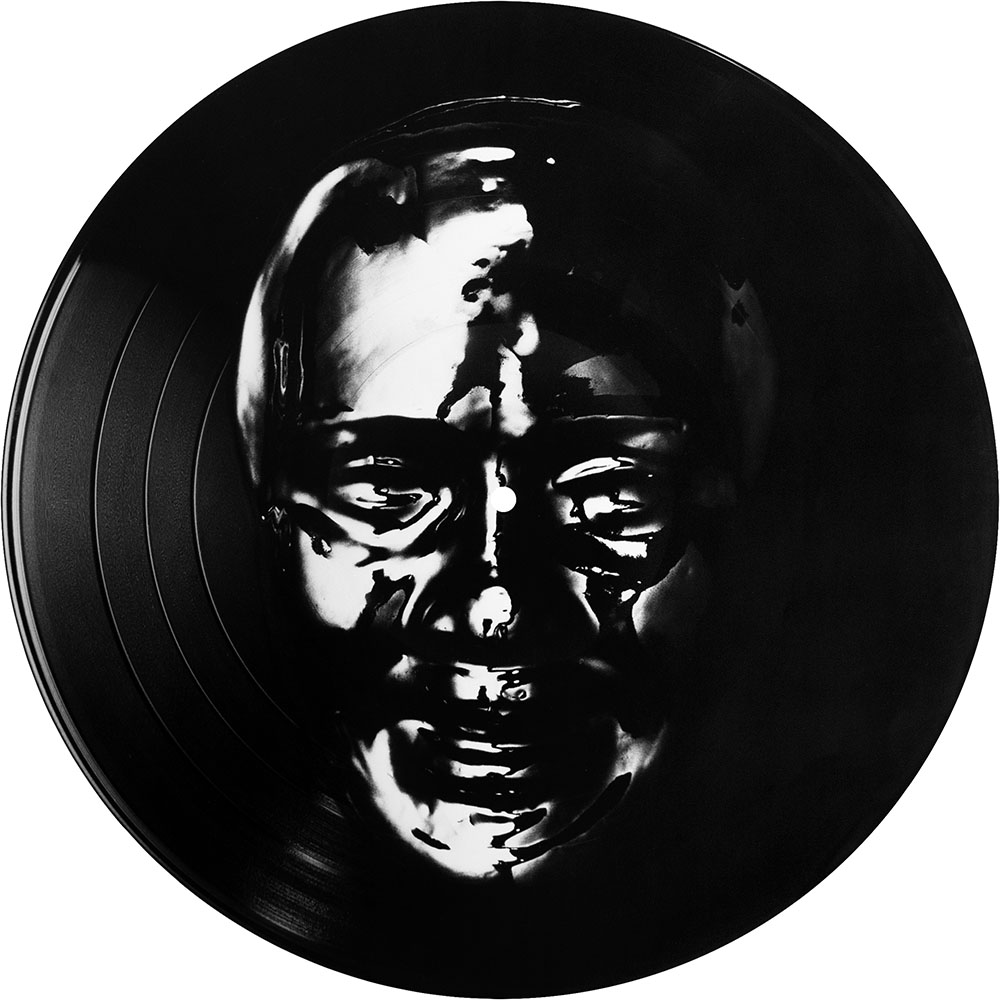
The second issue was completed and sent off to the printer, where a blue-line proof was made. I’m showing pages from that proof in this article because at that stage, prior to being printed, the project was killed.
I was heartbroken — but this disappointment soon was overshadowed by a much bigger one: being laid off from A&M, along with 40 other employees. In one mid-week afternoon, a full third of the company was jettisoned.
Only months later was I given an explanation for this purge: A&M was in negotiations with another label for a distribution deal, and needed to appear on paper much leaner than it had been. In that context, I suppose, Off the Record was a great extravagance — but a pittance relative to the salaries of 40 employees.
Up to that point I’d believed that, if one works hard and performs well he’ll be rewarded. My faith in that promise was a casualty of this episode — at least, I came to understand there were no guarantees. And, I learned hard lessons about the fickle and often inscrutable ways big business operates.
Ultimately, however, there was a bright and enduring silver lining to that passing cloud: That was the last staff job I ever held, and my career since, as a sole proprietor working, as I like to say, on behalf of exceptional clients in a variety of businesses, has provided many opportunities, and great and sustained satisfaction.
I’ve even gotten to work for A&M Records again — on a freelance basis, of course — in the mid-’90s, when the art department was headed by Jeri Heiden, and years after that, on projects for Vartan at Universal Music, which acquired A&M as part of its merger with Polydor.
Off the Record was so short-lived that we never got to learn how effective a marketing tool it could have become, but it was supremely gratifying to work on it and, several decades later, to recall the publication again — both the issue that made it out the door and the one that might’ve been.